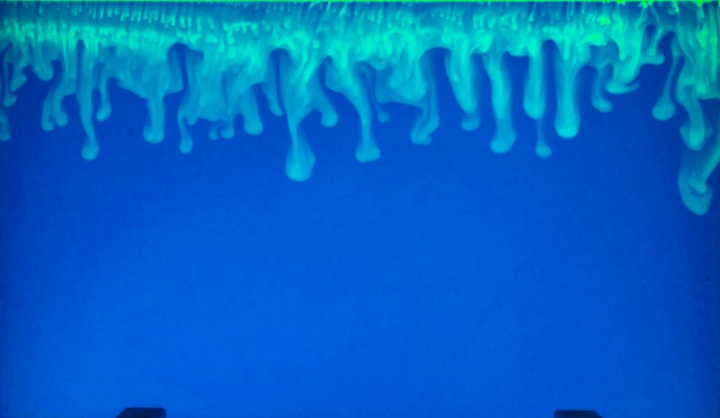Many environmental challenges that are driven by interface processes combine questions from several project areas of SFB 1313. As each project area of SFB 1313 focusses on one particular challenge, in the second funding phase, three vision topics where created, that combine the knowlegde of the project areas. These vision topics formulate their own research questions and focus on topics that brigde the Project Areas A to C.
Key challenges that were identified are:
- Salt precipitation, e.g. occurring due to evaporation in the unsaturated zone and driven by wind or solar radiation in the atmosphere and by capillary pumping from the saturated zone.
- Calcite dissolution in the subsurface which is relevant, e.g. during karstification where fluctuations in CO2 partial pressure are caused by atmospheric pressure fluctuations that can lead to increased dissolution potential due to induced convective mixing in the saturated zone.
- Fractures in porous media are of huge research interest. During SFB 1313's second funding period we will develop ideas for a third vision topic on fractures.
The vision topics illustrate how the commonalities of environmental engineering applications and their corresponding processes are planned to be handled, and how the structure of SFB 1313 reflects this approach in the coming years. Projects from different areas will contribute to the vision topics, so that area-spanning models will be developed that integrate the capabilities of the models from the individual areas.
Vision Topic "Salt Precipitation"
The primary focus of this vision topic is on soil salinisation with particular attention on the interactions between salt precipitation and evaporation. Research questions cover the formation of salt crusts, the development of density-driven instabilities as well as the influence of these processes on evaporation.
Vision Topic "Calcite Dissolution"
The subject of calcite dissolution is a new research object within SFB 1313 and shall be investigated as vision topic, starting with the second funding period of SFB 1313 in January 2022.
Density-driven dissolution of carbon dioxide in water is a well-known and much described mechanism in geological sequestration of this greenhouse gas. It is remarkable that such enhanced dissolution does not receive attention in karst hydrology and speleology. Models and hypotheses on karst development are complex and consider many different processes. E.g. Seasonal variations of microbial soil activity and root respiration or barometric-pressure changes cause fluctuations in CO2 partial pressures. Dependent on the existence and strength of a karst-water background flow, fingering regimes might be triggered causing enhanced dissolution of CO2. This allows replenishment of CO2, and, thus, dissolutional power even deep in the water body without the need for percolating water to transport dissolved CO2.
Contact

Samaneh Vahid Dastjerdi
Dr.-Ing.Postdoctoral Researcher, Management, Project MGK, Central Project Z




